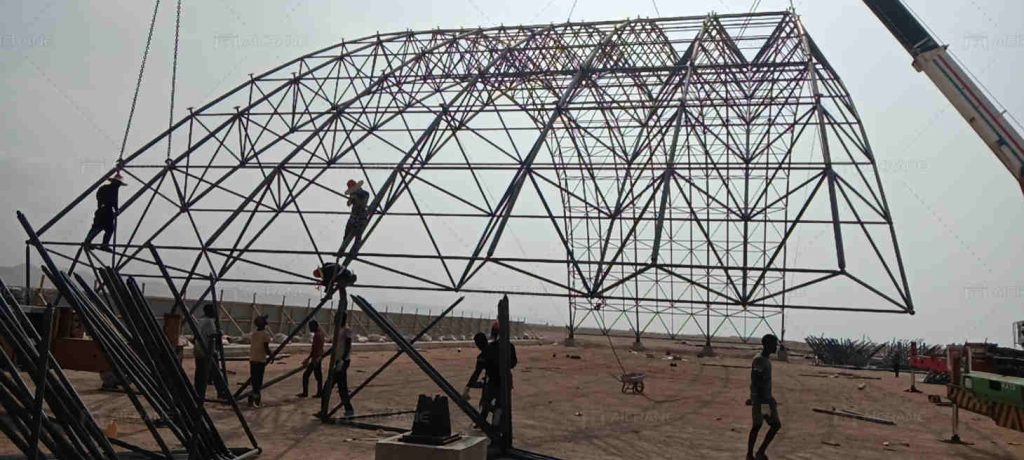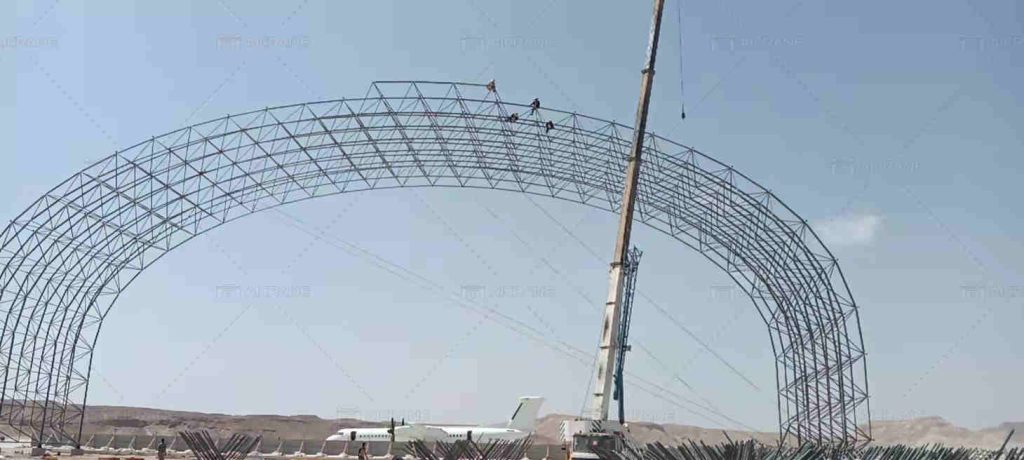A steel grid structure is a type of architectural framework consisting of a network of intersecting steel beams or bars that are arranged in a grid-like pattern. These structures are commonly used in modern construction projects due to their strength, durability, and ability to cover large spans without the need for internal supports. Steel grid structures are often employed in the construction of roofs, bridges, industrial buildings, and even in specialized applications like sports stadiums or exhibition halls. However, proper installation and maintenance are crucial for ensuring the safety, longevity, and optimal performance of these structures. This article provides a detailed guide on how to install and maintain steel grid structures.

Planning and Preparation for Installation
Before beginning the installation of a steel grid structure, thorough planning and preparation are essential. This ensures that the project proceeds efficiently and meets safety standards.
Design and Engineering
The first step in the installation process is to ensure that the steel grid structure is designed by experienced engineers who can account for factors like load-bearing capacity, material strength, and environmental conditions. The design should consider the grid’s overall geometry, the size and spacing of the beams, and the connections between components. Steel grid structures can vary widely depending on their intended use, so customizing the design to the specific needs of the project is crucial.
Once the design is finalized, an engineering analysis should be performed to calculate the expected loads and stresses on the steel structure. This will ensure that the grid is capable of handling the loads it will be subjected to, such as the weight of the roof, equipment, or other loads.
Site Preparation
The construction site should be cleared and prepared before installation begins. The foundation must be level and capable of supporting the weight of the steel grid structure. Proper groundwork, including excavation and leveling, is essential to ensure that the grid structure will be installed safely and effectively. The steel grid should be positioned to provide adequate support for the roof or floor it will support, with attention to alignment and any potential obstacles.
Material Procurement
The materials for the steel grid structure must be sourced in accordance with the specifications outlined in the design. Steel beams, trusses, and other necessary components must be inspected for quality and integrity before they are delivered to the site. It’s crucial to ensure that the materials meet the required standards to avoid complications during installation.
Installation Process
Once the planning, design, and procurement phases are completed, the actual installation of the steel grid structure can begin. Some manufacturers like Aicrane will provide installation guidance. The following steps outline the typical installation process.
Assembly of Steel Grid Components
The steel grid structure is typically constructed in sections, and these sections must be assembled on-site or pre-fabricated off-site before being transported for installation. Workers should follow the detailed design plans and ensure that all steel components are correctly positioned.
The grid structure is assembled by first placing the primary beams or main supports at their designated locations. These beams will bear the main loads of the grid and serve as the foundation for the entire structure. Next, secondary beams or bars are placed at regular intervals across the primary beams to create the grid pattern.
Connection and Welding
Once the steel grid components are positioned, they need to be connected using bolts, rivets, or welding, depending on the design specifications. Welding is often used to create a stronger and more permanent connection, while bolts or rivets may be used for ease of assembly and flexibility. The welding process should be carried out by certified welders to ensure that all connections are strong and free from defects.
Proper alignment is critical during this stage. Each section of the grid structure must be carefully adjusted to avoid misalignment, which could result in uneven loads and reduced structural integrity. After each connection, the structure should be checked for squareness and stability before moving on to the next phase.
Installation of Support Components
In addition to the steel grid itself, other support components, such as braces, columns, or reinforcement bars, may need to be installed to provide additional stability to the structure. These components are particularly important for ensuring the grid’s resistance to lateral forces, such as wind or seismic activity.
Quality Control and Inspection
Before proceeding with the next phase of construction, it is essential to conduct a thorough quality control inspection to ensure the grid structure has been installed correctly. This inspection should include checks for proper alignment, secure connections, and overall structural integrity. Any defects or issues identified during the inspection should be addressed immediately.

Maintenance of Steel Grid Structures
Once the steel grid structure has been installed, regular maintenance is essential to ensure its longevity, safety, and efficiency. Over time, steel structures can experience wear and tear due to environmental conditions, load-bearing stresses, and other factors. Maintenance can help prevent damage, extend the structure’s lifespan, and ensure it continues to perform at an optimal level.
Regular Inspections
Routine inspections are crucial for identifying any signs of damage or wear that could compromise the integrity of the steel grid structure. These inspections should be carried out by qualified professionals at regular intervals, such as every six months or annually, depending on the structure’s use and exposure to environmental factors.
Inspectors should look for signs of corrosion, especially in areas where water or moisture is likely to accumulate. They should also check for cracks, deformations, or loose connections that could indicate structural issues. If any problems are identified, repairs or replacements should be made promptly to prevent further damage.
Corrosion Protection
Steel grid structures are susceptible to corrosion, especially when exposed to moisture or harsh environmental conditions such as saltwater in coastal areas. To prevent corrosion, steel components should be coated with anti-corrosion materials, such as galvanizing or epoxy coatings. Regular maintenance of these protective coatings is necessary to ensure they remain intact and effective.
If corrosion is detected during an inspection, the affected areas should be cleaned, treated, and re-coated as needed. In severe cases, the corroded sections may need to be replaced entirely.
Cleaning and Lubrication
Dirt, dust, and debris can accumulate on the steel grid structure over time, which can impair its performance and aesthetic appearance. Regular cleaning is essential to maintain the structure’s integrity and appearance. This can be done using pressure washing or other cleaning methods that are appropriate for the material and environment.
Moving parts of the steel grid, such as joints, hinges, or cables, may require periodic lubrication to prevent wear and ensure smooth operation. The correct lubricants should be used to avoid damaging the components.
Load Monitoring
Steel grid structures are designed to bear specific loads, and it’s important to monitor the loads placed on the grid to ensure they do not exceed the design specifications. Overloading the grid structure can lead to deformations, stress fractures, or even catastrophic failure.
Regular load checks should be conducted to ensure that the structure is not subjected to excessive stress. If the load-bearing capacity of the structure is exceeded, adjustments should be made to distribute the load more evenly or additional support should be added.
Repairs and Upgrades
As the structure ages, repairs and upgrades may be necessary. Small issues, such as loose bolts or minor cracks, should be addressed immediately to prevent them from worsening. More significant repairs, such as replacing damaged beams or reinforcing weakened sections, may be required if the grid structure begins to show signs of significant wear.
Upgrades may also be needed as the needs of the building or facility change. For example, the steel structure warehouse may need additional reinforcement if it is being used to support heavier loads, or if new safety regulations require additional structural elements.
The installation and maintenance of steel grid structures require careful planning, skilled labor, and regular upkeep to ensure the safety and longevity of the structure. By following best practices for installation, including proper material selection, precise assembly, and rigorous quality control, you can ensure that your steel grid structure performs optimally. Regular maintenance, including inspections, corrosion protection, and load monitoring, will help extend the lifespan of the structure and prevent costly repairs down the road. With attention to detail and ongoing care, a well-installed and maintained steel grid structure can provide reliable support for many years.